For many houseplants, climbing is an essential need for them to grow healthy, fortified leaves and branches. Providing a moss pole for your plants adds extra benefits where normal poles or trellises lack.
Read on for this extensive guide to moss poles. We’ll discuss what moss poles are, why they are so beneficial, as well as an instruction guide to making your own moss pole!
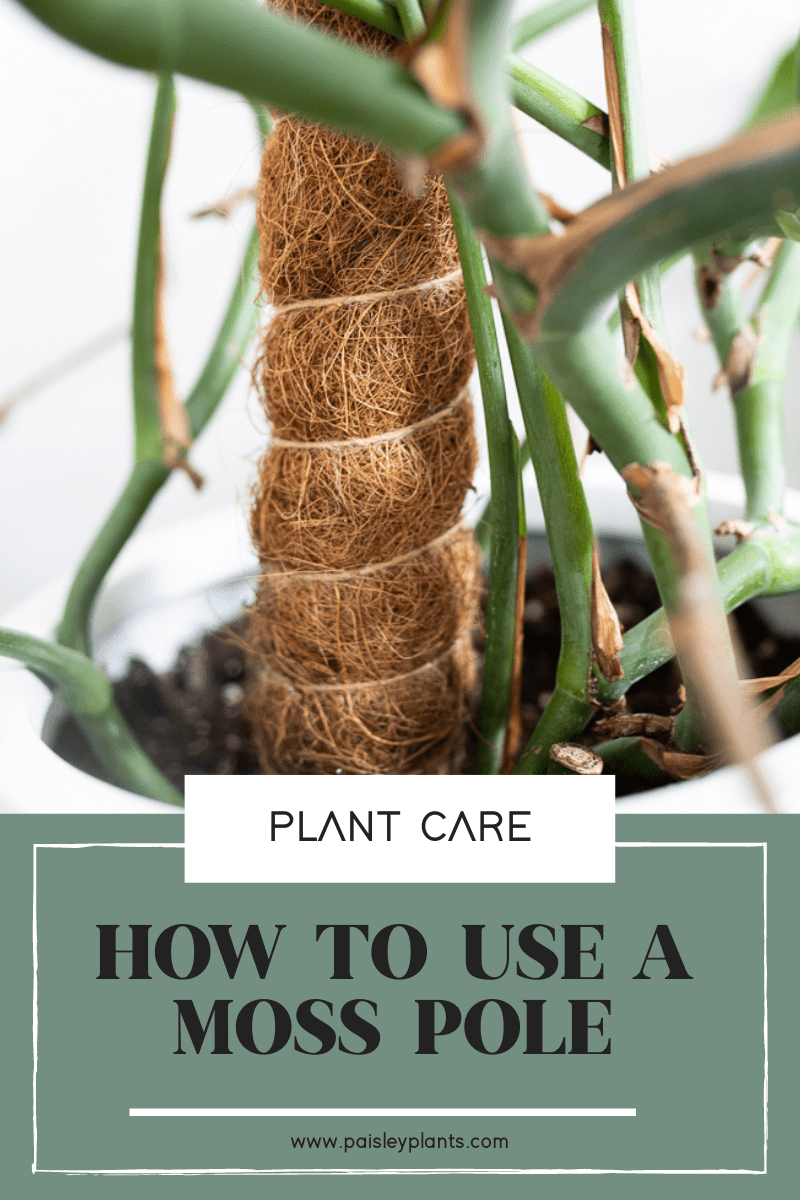
Table of Contents
What is a Moss Pole?
A moss pole is simply a support structure used for plants. It is made of a fibrous, absorbent material that makes it easier for climbing plants to comfortably latch onto while they climb.
The material moss poles are made from is water-retentive, which allows for the plant to access extra nourishment that they otherwise would not have with a standard trellis. While it is not required for a moss pole to be made of moss, the most popular material for moss pole consists of peat moss.
Why Do You Need a Moss Pole?
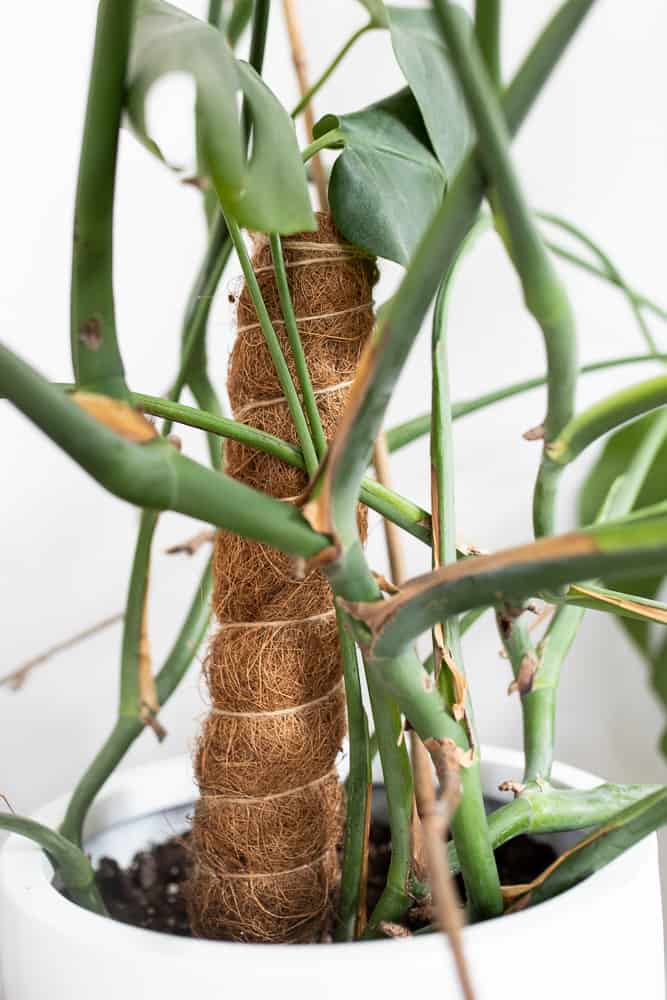
For those who are considering a moss pole, you might be asking yourself why a moss pole is necessary in the first place? And what separates it from plant stakes or other plant supports?
Moss poles provide more benefits than just simply holding up your indoor climbing plant. Let’s look at some notable benefits to moss poles:
They supply moisture. Moss poles are made of materials that retain water (coco coir, sphagnum peat moss, etc). By wetting the moss pole, you’ll be able to provide extra moisture for the plant’s aerial roots.
It helps your plant feel closer to their natural habitat. One of the most important responsibilities plant owners have is to make their plants feel as comfortable as possible by replicating their natural environment.
In the wild, climbing plants (especially those that are epiphytic), use other plants or tree trunks in order to climb. The inclusion of a moss pole is a great way to give your your plant extra support by simulating the native habitat they are used to.
By utilizing a moss pole, your plant will receive these essential benefits that they would otherwise be deprived of with a regular pole.
Types of Moss Poles
As we’ve brushed over previously, moss poles come in a variety of materials. Each one has its own benefits and is best used with different types of plants. Two of the most popular materials that you will come across are sphagnum peat moss and coco coir.
1. Sphagnum Peat Moss
This is the standard for most moss poles. This pole consists of preserved sphagnum moss which is secured by string. Its benefits are that it is very water retentive yet resistant to rotting. A sphagnum moss pole has a soft texture, making it easy for plants to root into.
These types of moss poles work best with plants that require a consistent stream of moisture, as well as epiphytic plants. I personally use this for my monstera deliciosa.
2. Coco Coir
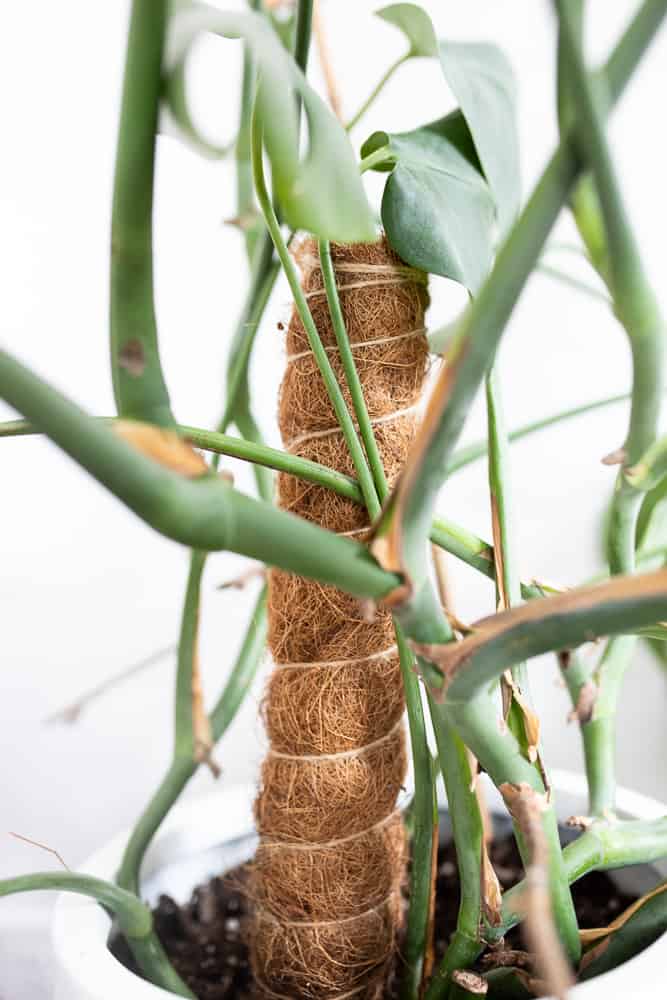
Coco coir is very similar to sphagnum peat moss. While not as absorbent as sphagnum moss, coconut coir is great with moisture retention, in addition to being resilient against breaking down. Coco coir is also more sustainable and widely accessible compared to sphagnum moss.
You can use coco coir poles with plants that require a moss pole for support, as opposed to nutrients. Examples of such plants are climbing aroid plants like philodendron, monsteras, etc.
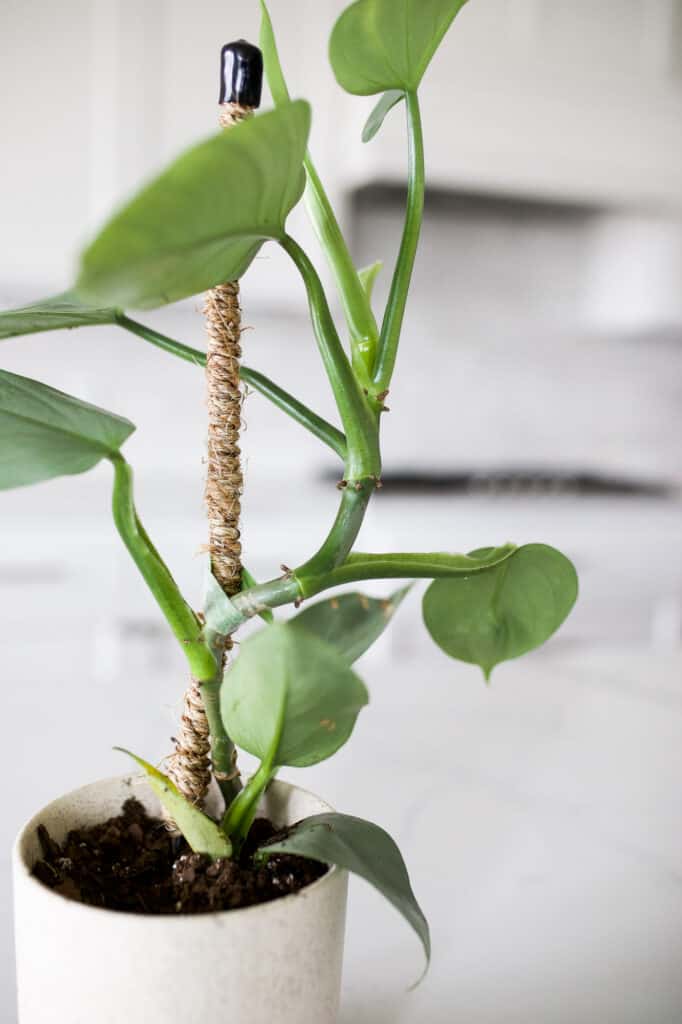
How to Use a Moss Pole with Your Plants
With smaller, juvenile plants, you can simply place the base of the pole in the plant pots with them as you would with a normal stake/trellis. Over time, the plant will naturally grab onto the moss pole and climb as it grows.
A larger, heavier plant will require some assistance in order to get them to use the moss pole. Again, stick the pole into the soil with the plant in the center of the pot (making sure to avoid damaging the roots). You may need to repot your plant in a new pot in order to get around an established root system.
In order to encourage the plants to climb up the moss pole, you will need to train them by tying their vines to the moss pole using some plant velcro or string. As time progresses, the plant will grow aerial roots that will latch onto the moss pole.
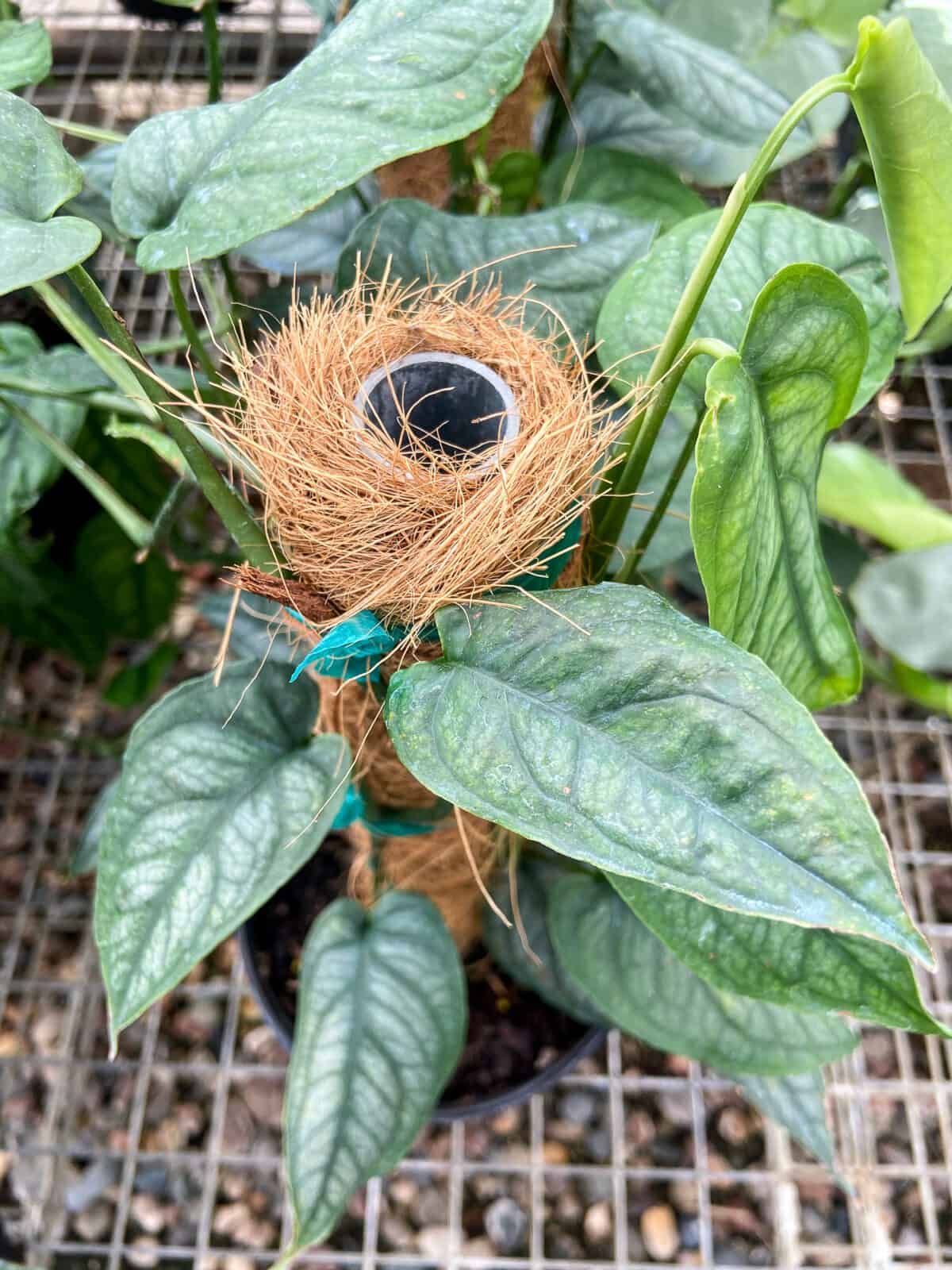
Buying vs. DIY
When considering getting a moss pole for your house plants, you may be wondering if its worthwhile to DIY your own moss pole, as opposed to buying one at the store. There are pros and cons associated with both buying or DIY-ing a moss pole.
For one, DIY-ing your moss pole is significantly cheaper than purchasing a pre-made moss pole. Many of the materials that goes into a DIY moss pole can already be found around the average household (pipe, wooden plank, string).
In addition, making your own moss pole allows for you to customize the pole to the size that you need, instead of having to settle for the pre-made poles at your local garden nursery.
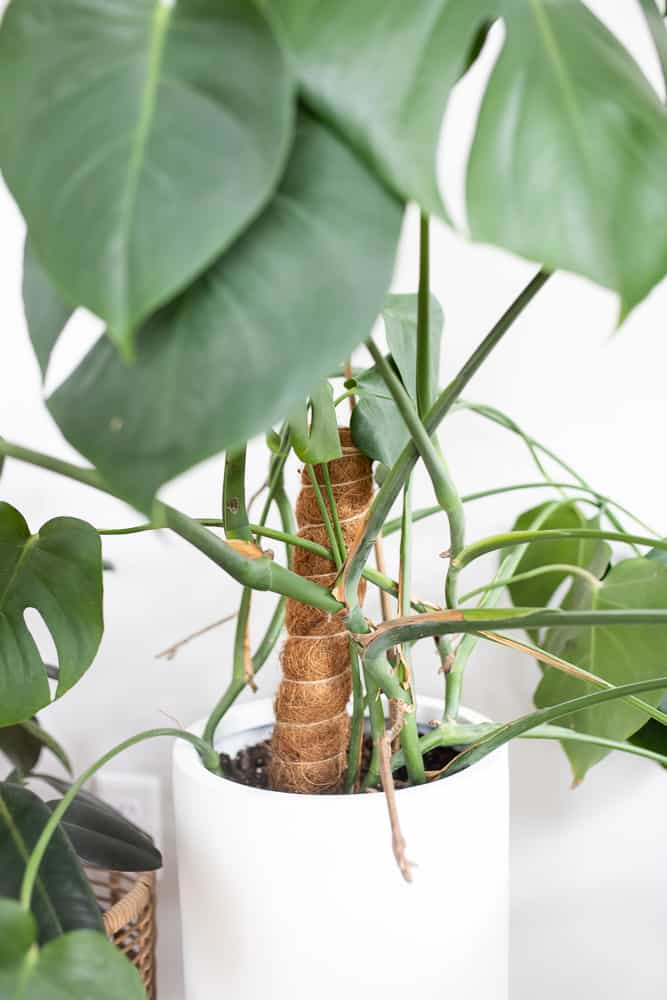
On the other hand, buying a pre-made moss stick is more convenient. Making your own moss pole can get a bit messy; purchasing a moss pole only requires a trip to the home improvement store.
If you’re a handy person, we definitely recommend DIY is the way to go. DIY-ing your own moss pole costs a fraction of the price that a purchased moss pole costs. In addition, you have the ability to tailor the moss pole to the size of your plant and accommodate their future height and width.
Regardless, both options will only benefit your houseplants in the long run. Pre-made moss poles are also just as effective as a DIY pole, just with the added benefit of convenience.
Moss Poles to Buy
I’ve bought a few different moss poles for my plants. Here’s a few I’ve loved.
1. Moss Pole Coco Coir Totem Stakes
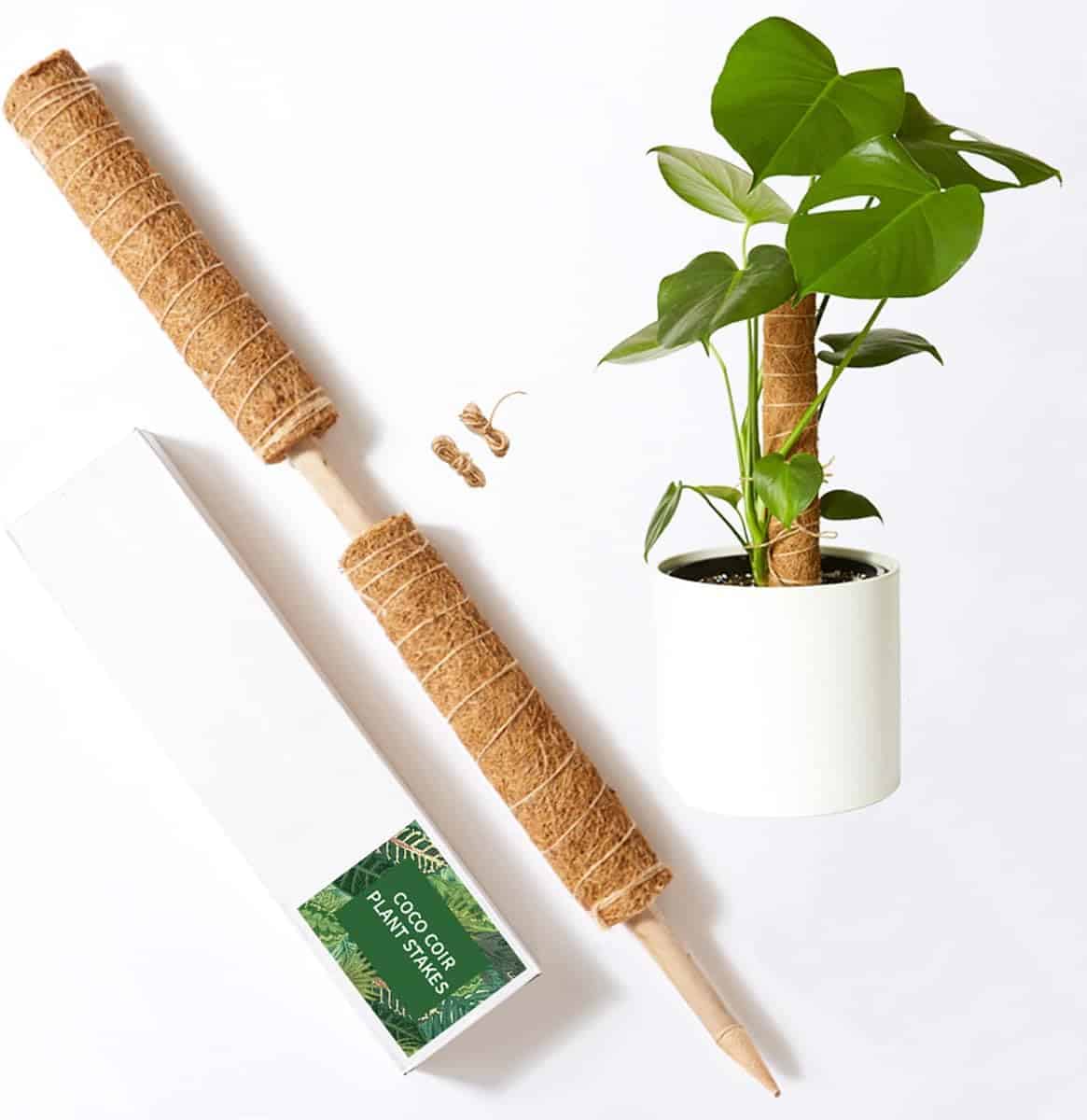
I use this one for my monstera plants! It’s easy to use and comes as a pack of two. This can be used together to give your plant even more height or separate for 2 individual plants.
This stake is covered in coir so any aerial roots your plant has can easily attach themselves to this material.
2. Bendable Moss Pole
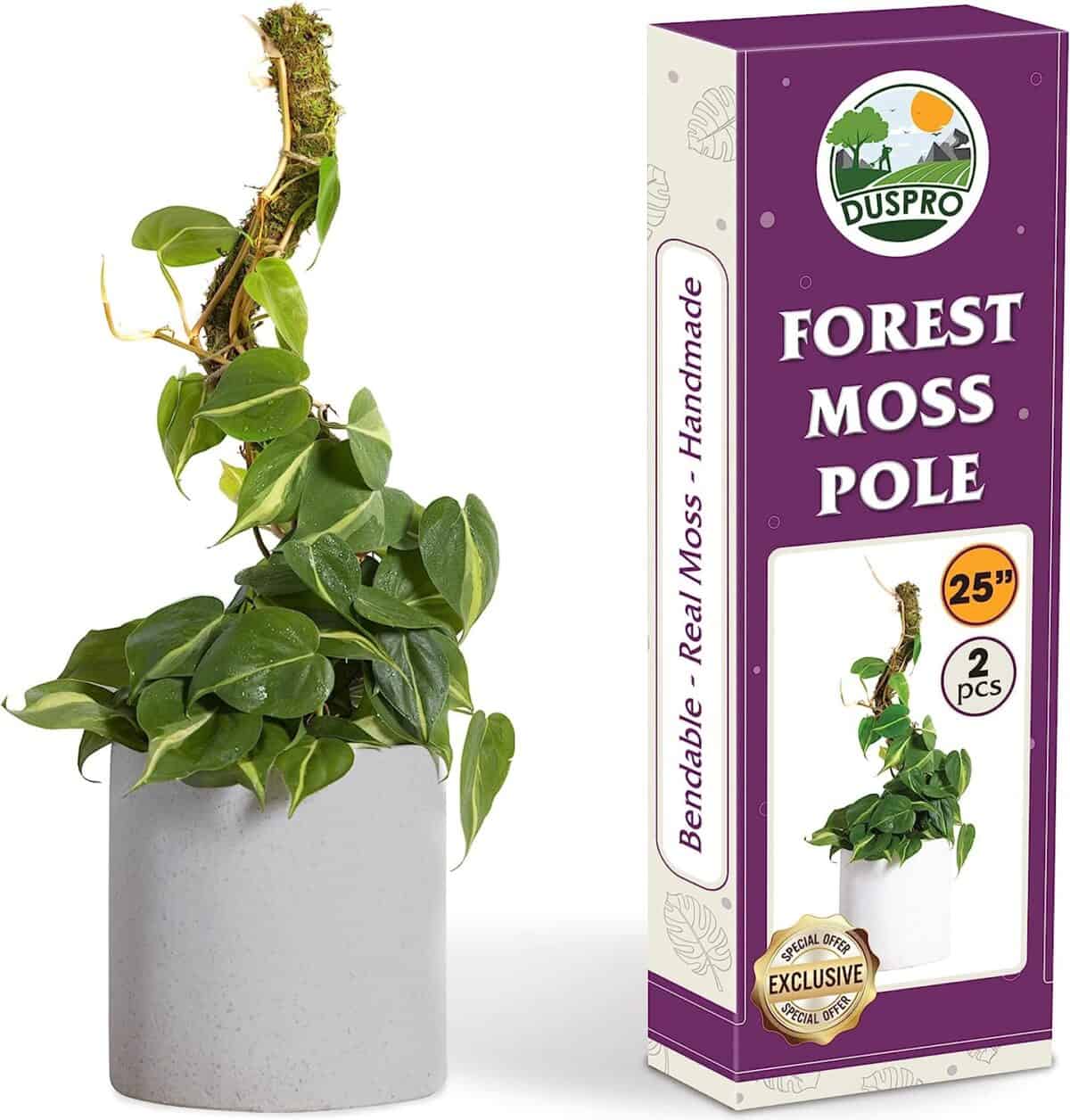
If you like a more organic looking way for your plants to climb rather than just straight up, try a bendable plant stake! These stakes are made with Duspro forest moss which your plants will easily root themself too.
It also has a more natural green color that will blend in with your plant. This one comes in different quantities and sizes to fit your need.
3. Plastic Moss Pole
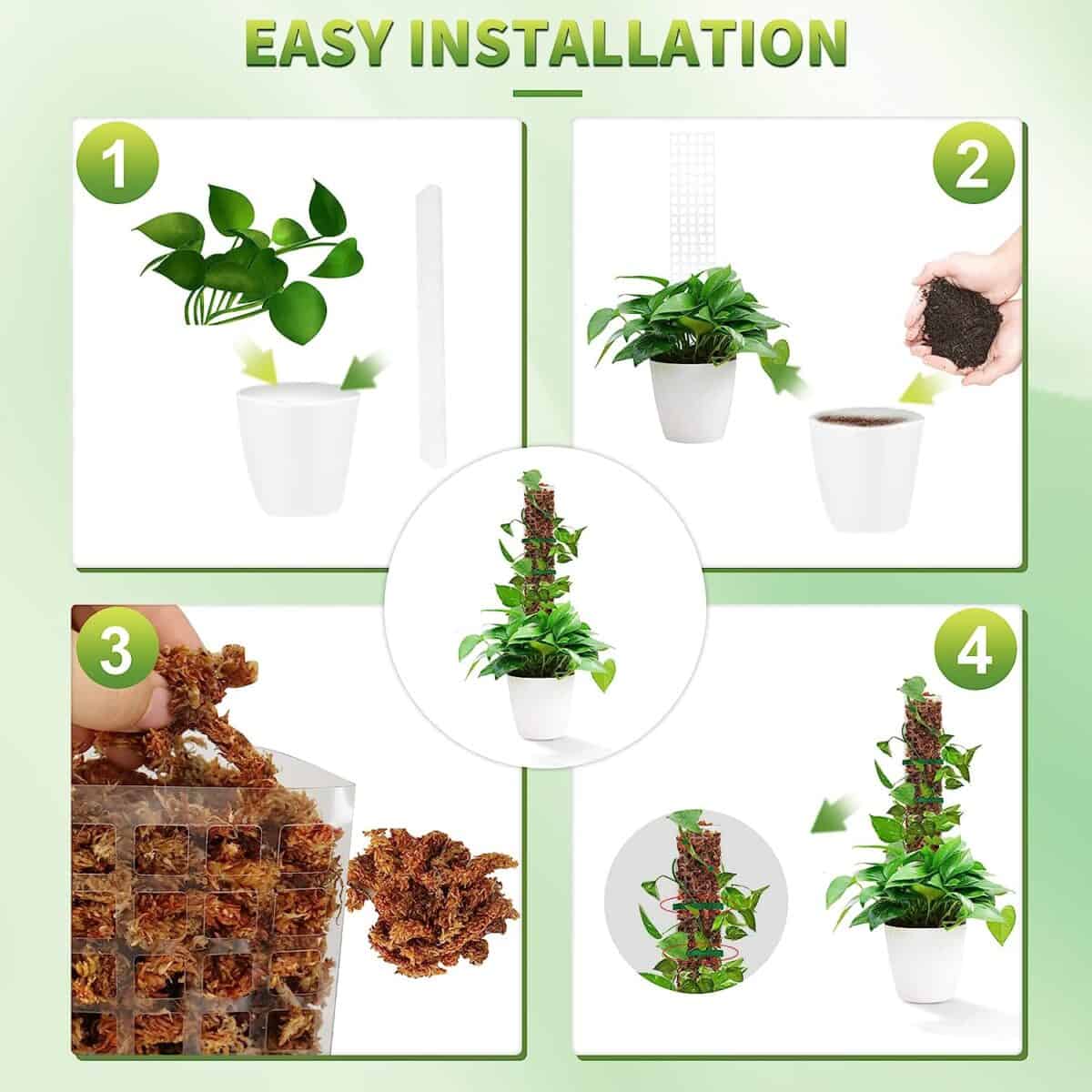
This plant pole is a bit unique in that it doesn’t show up already made, rather you fill it with whatever you choose (sphagnum moss is recommended). It’s stackable so you can use it with more than one pole.
How to DIY a Moss Pole
If a DIY moss pole is more of your style, then you can easily assemble one of your own in these simple steps:
What you need:
- Fibrous material, such as sphagnum peat moss or coco coir
- A support structure, such as a wooden dowel, bamboo stake or PVC pipe
- String or Plant Velcro
- A large bowl
1. Prep Your Station
Prepare your workstation ahead of time. Assembling your moss pole can get messy, so it is recommended to work in an outdoor area.
2. Pre-Measure Support Structure
Pre-measure and cut your support structure. The top of the pole should be about 1-2 feet taller than your plant.
3. Soak Moss
(Optional if using sphagnum moss) Fill a bowl with water and soak your moss for 15-20 minutes. When the moss has soaked all the water and expanded, wring out the excess water.
4. Attach Moss
Start layering the fibrous material onto the pole, using the string as you go in order to fasten the material to the pole. You’ll want a layer that is thick enough for the plant’s aerial roots to securely latch onto the pole.
5. Put Pole Into Pot
Once the moss pole is complete, gently place the moss pole into the pot. Take caution as not to harm the roots underneath the soil.
6. Attach Plant to Pole
If your plant already has aerial roots growing, you can use extra string to tie the plant to the moss pole.
Types of Plants that Use Moss Poles
Moss poles are common with climbing plants, particularly with epiphytic plants. Some of the most common epiphytes that like to climb are monsteras such as the monstera adansonii, arrowhead plants, and pothos plants.
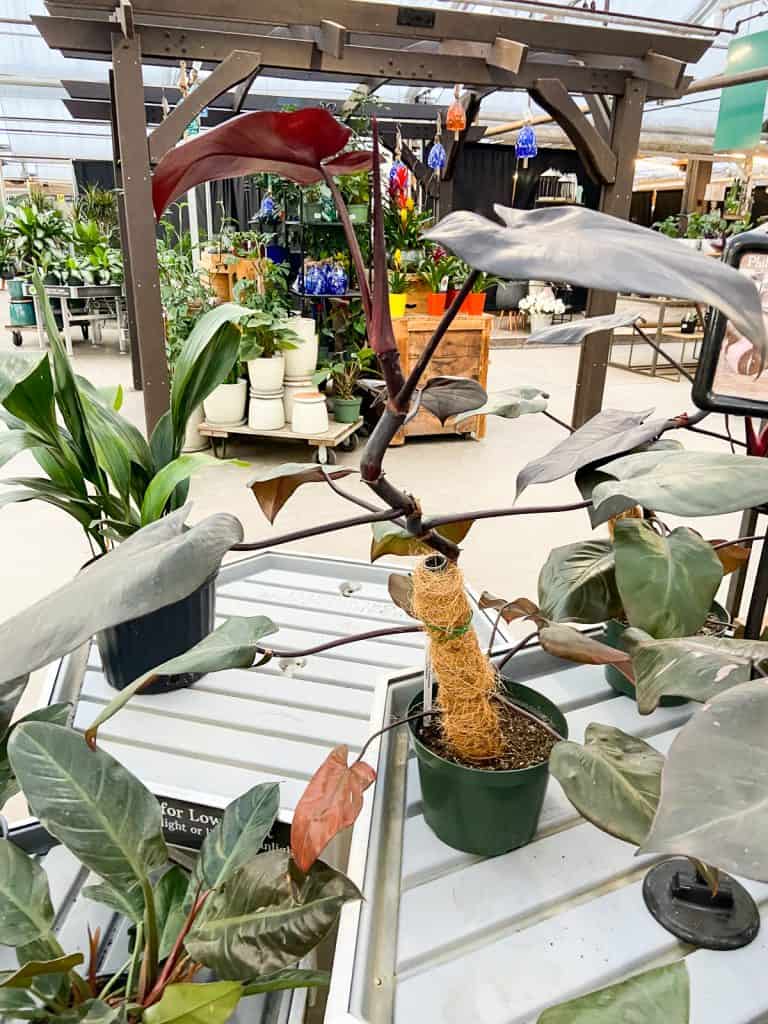
An epiphytic plant is a type of plant that does not grow in typical soil. In the wild, they grow on mossy rocks, or on the side of a tree, or even other plants. This is because their roots require air circulation that they would not receive being under the ground.
Epiphytic plants are the best plants to use moss poles with, it closely replicates their native habitat but in the comfort of your home.
Aside from epiphytes, any climbing plant will benefit from using a moss pole. Examples of such plants include ivy, hoyas, creeping figs, pothos, and many more.
FAQ
Moss poles help plants grow up but not necessarily help the growth of your plants. For tropical plants that are used to climbing up other plants toward the light source, this is the next best thing to mimic that!
Conclusion
The key to raising a healthy and happy houseplant is by providing them with the luxuries of their natural habitat. While we cannot bring the wilderness into our houses, we can make small changes that help our exotic houseplants feel like they’re home.
One of those small changes is by providing a moss pole for climbing and epiphytic plants. The inclusion of a moss pole helps these plants access more moisture via the fibrous materials, and the pole allows the plant to stretch its branches and grow to new heights!
If you use a basic pole for your houseplants, then definitely consider making the switch to moss poles!

